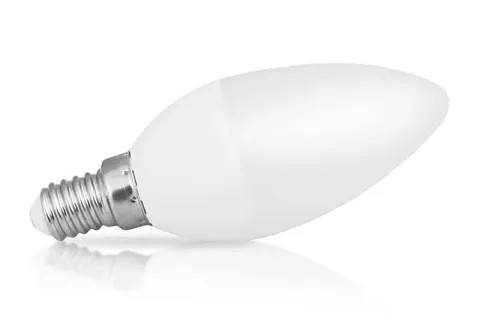Night lights usually need to be turned on for a long time, and the long life characteristics of LED lamps make them very suitable for this purpose. The life of LED night lights can usually reach more than 25,000 hours, compared with the much shorter life of traditional bulbs.
If the heat dissipation design of LED lamps is poor, the high temperature of LED chips will accelerate their aging. High temperature will cause electron migration inside the chip, which will reduce its luminous efficiency and eventually lead to brightness decay.
When choosing LED lighting fixtures, consumers should focus on lumens rather than watts. Lumens more directly reflect the brightness of the lamp, while watts are mainly used to reflect the energy consumption of the lamp. Understanding the difference between the two can help consumers make more appropriate purchasing decisions.
According to the principles of physics, the greater the current, the more times the electrons and holes in the LED recombine, and the more light energy is generated, so the LED will appear brighter. For standard LED bulbs or LED panel lights, the relationship between brightness and current is usually linear - that is, the current increases, the brightness increases.
If the lamp uses LED lamps with strong ultraviolet emission, or white and blue LED lamps, it may attract more insects, especially at night or in summer. On the contrary, if the lamp uses red light or warm white light, such lamps will be less attractive and the probability of insects gathering is relatively low.
Generally speaking, the length of the vanity wall light is recommended to be no more than 1/3 of the dressing table. Specifically, for a 72-inch dressing table, a wall light with a length between 24 and 36 inches (about 61 to 91 cm) can be selected.
For example, if you need to provide uniform lighting for a 20 square meter area and the target illumination is 300 lumens/square meter, the total lumens required is: Total lumens = target illumination × space area = 300 × 20 = 6000 lumens Then, calculate the required wattage based on the luminous efficacy of the selected LED lamp. For example, assuming that the selected luminous efficacy is 150lm/W, the required wattage is: Required wattage = 6000/150 = 40W
Color temperature is a physical quantity that describes the color of a light source, usually in Kelvin (K). The color temperature represents the degree of warmth or coolness of the color tone of the light source. Color temperature is defined by simulating blackbody radiation.
For track lights, the bulb is one of the key factors that determine its lighting effect. With the popularization of LED technology, more and more track lights have begun to use LED bulbs as light sources because LED bulbs have the advantages of high energy efficiency, long life, low heat, and environmental protection.
Pros of LED recessed downlights: 1. Energy-saving and high efficiency 2. Modern and simple appearance design 3. Uniform light effect and reduced glare 4. Flexible installation methods 5. Adapt to a variety of scenarios and needs Cons of LED recessed downlights: 1. High installation requirements 2. Inconvenient maintenance 3. Restrictions on light adjustment 4. High cost
Although the LED chip itself requires direct current to work properly, most home and commercial power systems provide alternating current. Therefore, when the LED lighting downlight is working, it needs to convert the alternating current into direct current through a power driver module.
LED itself is a point light source with strong divergence of light. In LED spotlights, through reasonable optical design and the role of lens or reflector, the propagation direction of light can be changed and the divergence of light can be reduced, thereby focusing the light beam to a specific area.












